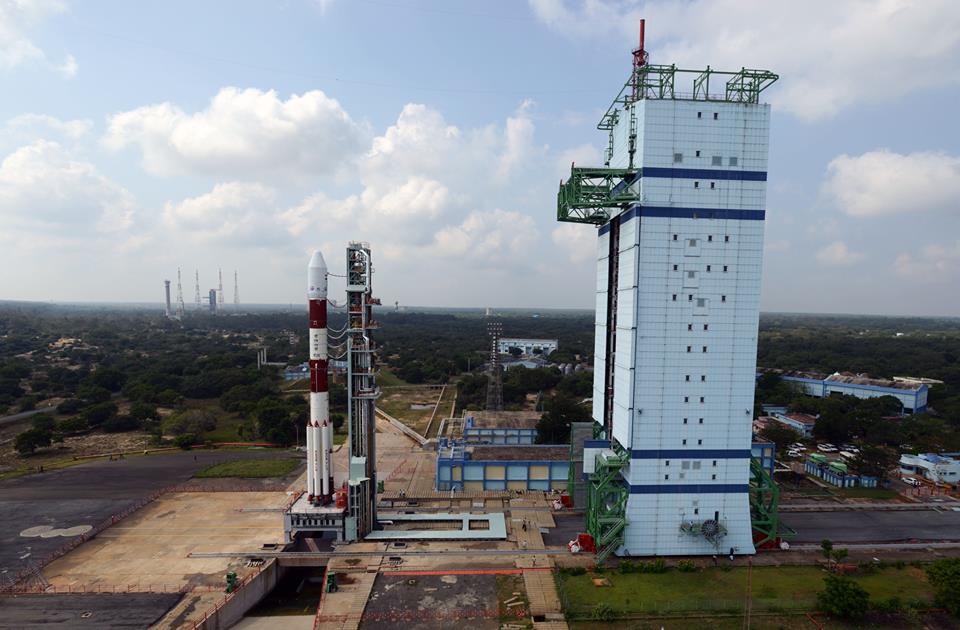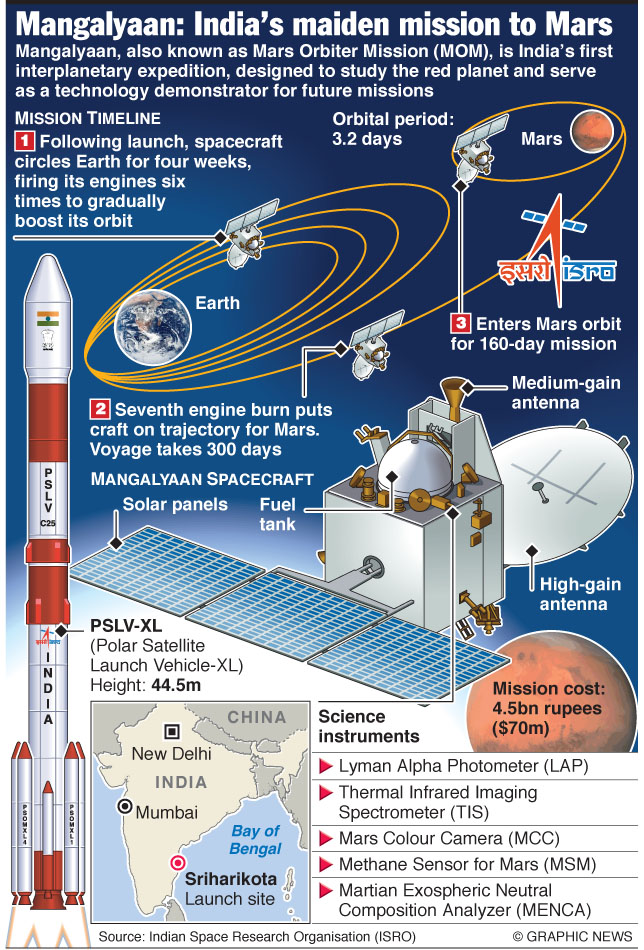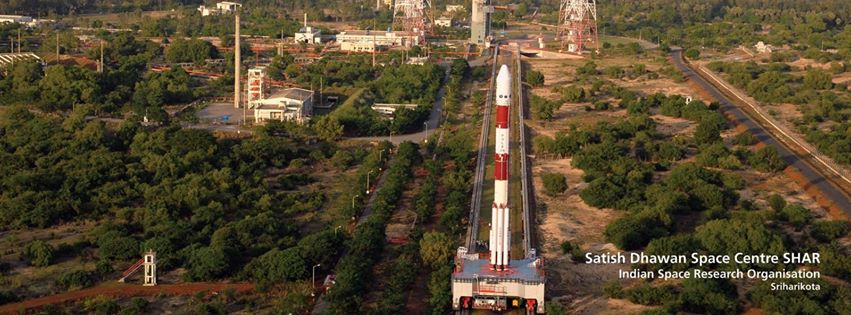Jade
SENIOR MEMBER

- Joined
- Mar 5, 2010
- Messages
- 5,622
- Reaction score
- -1
- Country
- Location
India has successfully launched a spacecraft to the Red Planet - with the aim of becoming the fourth space agency to reach Mars.
The Mars Orbiter Mission took off at 09:08 GMT from the Satish Dhawan Space Centre on the country's east coast.
The head of India's space agency told the BBC the mission would demonstrate the technological capability to reach Mars orbit and carry out experiments.
The spacecraft is set to travel for 300 days and reaching Mars orbit in 2014.
If the satellite orbits the Red Planet, India's space agency will become the fourth in the world after those of the US, Russia and Europe to undertake a successful Mars mission.
A 56-hour countdown to the launch began on Sunday.

What ordinary Indians think of the country's mission to Mars
Some observers are viewing the launch of the MOM, also known by the informal name of Mangalyaan (Mars-craft), as the latest salvo in a burgeoning space race between the Asian powers of India, China, Japan, South Korea and others.
Prof Andrew Coates, from the UK's Mullard Space Science Laboratory, told BBC News: "I think this mission really brings India to the table of international space exploration. Interplanetary exploration is certainly not trivial to do, and [India] has found some interesting scientific niches to make some measurements in."
Those niche areas include searching for the signature of methane (CH4) in the Martian atmosphere, which has previously been detected from Martian orbit and telescopes on Earth. However, Nasa's Curiosity rover recently failed to find the gas in its measurements of atmospheric gases.
CH4 has a short lifetime in the Martian atmosphere, meaning that some source on the Red Planet must replenish it. Intriguingly, some 95% of atmospheric methane on Earth is produced by microbes, which has led some to propose the possibility of a biosphere deep beneath the Martian surface. But the gas can be produced by geological processes too, most notably by volcanism.
Definitive conclusions are likely to be elusive, but the spacecraft's Methane Sensor for Mars (MSM) instrument will aim to make measurements and map any potential sources of methane "plumes".
The spacecraft will also examine the rate of loss of atmospheric gases to outer space. This could provide insights into the planet's history; billions of years ago, the envelope of gases around Mars is thought to have been more substantial.
http://www.bbc.co.uk/news/science-environment-24729073
The Mars Orbiter Mission took off at 09:08 GMT from the Satish Dhawan Space Centre on the country's east coast.
The head of India's space agency told the BBC the mission would demonstrate the technological capability to reach Mars orbit and carry out experiments.
The spacecraft is set to travel for 300 days and reaching Mars orbit in 2014.
If the satellite orbits the Red Planet, India's space agency will become the fourth in the world after those of the US, Russia and Europe to undertake a successful Mars mission.
A 56-hour countdown to the launch began on Sunday.

What ordinary Indians think of the country's mission to Mars
Some observers are viewing the launch of the MOM, also known by the informal name of Mangalyaan (Mars-craft), as the latest salvo in a burgeoning space race between the Asian powers of India, China, Japan, South Korea and others.
Prof Andrew Coates, from the UK's Mullard Space Science Laboratory, told BBC News: "I think this mission really brings India to the table of international space exploration. Interplanetary exploration is certainly not trivial to do, and [India] has found some interesting scientific niches to make some measurements in."
Those niche areas include searching for the signature of methane (CH4) in the Martian atmosphere, which has previously been detected from Martian orbit and telescopes on Earth. However, Nasa's Curiosity rover recently failed to find the gas in its measurements of atmospheric gases.
CH4 has a short lifetime in the Martian atmosphere, meaning that some source on the Red Planet must replenish it. Intriguingly, some 95% of atmospheric methane on Earth is produced by microbes, which has led some to propose the possibility of a biosphere deep beneath the Martian surface. But the gas can be produced by geological processes too, most notably by volcanism.
Definitive conclusions are likely to be elusive, but the spacecraft's Methane Sensor for Mars (MSM) instrument will aim to make measurements and map any potential sources of methane "plumes".
The spacecraft will also examine the rate of loss of atmospheric gases to outer space. This could provide insights into the planet's history; billions of years ago, the envelope of gases around Mars is thought to have been more substantial.
http://www.bbc.co.uk/news/science-environment-24729073


















